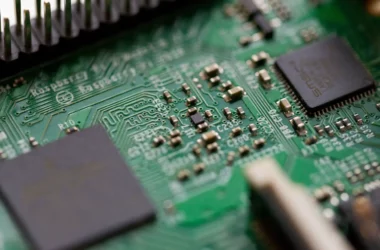Introduction
The Emergence of 5G Technology
In the rapidly evolving world of technology, the advent of 5G stands out as a monumental leap forward. This fifth-generation technology for cellular networks is not just an upgrade; it’s a revolution. With its unprecedented speed, ultra-low latency, and massive connectivity capabilities, 5G is set to redefine the way we interact with the digital world. Its emergence is a game-changer, promising to transform various sectors, including how we work remotely.
The Growing Importance of Remote Work
The concept of remote work has gained significant traction in recent years, more so accelerated by the global events that have reshaped our working culture. The traditional office-bound job is no longer the only viable working model. Instead, a large portion of the workforce has shifted towards telecommuting, embracing the flexibility and work-life balance it offers. Remote work, once a luxury, has become a necessity and, for many, a preferred mode of professional engagement.
Exploring the Transformation of Remote Work through 5G
This shift to remote work brings with it a host of challenges and opportunities. Connectivity and seamless communication are the backbones of effective remote work, and this is where 5G enters the scene. The thesis of this exploration is straightforward yet profound: How is 5G technology transforming the landscape of remote work? We delve into the intricate ways 5G is enhancing remote work efficiency, overcoming traditional barriers, and paving the way for a more connected, productive, and flexible working environment. As we embark on this journey, we’ll uncover the multifaceted impacts of 5G on telecommuting and how it’s shaping the future of work.
Section 1: Understanding 5G and Its Capabilities
Subsection 1.1: What is 5G Technology?
5G technology represents the fifth generation of cellular network technology, designed to vastly improve upon its predecessors. At its core, 5G is not just about speed; it’s about creating a more connected and responsive network. It enables the rapid transfer of data over wireless systems, a critical factor in today’s data-driven world. Unlike previous generations, which primarily focused on enhancing voice and data communication, 5G is built to accommodate the ever-growing Internet of Things (IoT), connecting a myriad of devices seamlessly.
Subsection 1.2: Key Features of 5G
The key features of 5G technology can be summarized as follows:
- Enhanced Speed: 5G networks offer significantly higher data speeds compared to 4G, with potential peak speeds of up to 10 Gbps. This means faster download and upload speeds, leading to more efficient data transmission.
- Reduced Latency: One of the most notable advancements of 5G is its ultra-low latency. Latency, the time it takes for data to travel from its source to its destination, is reduced to as little as 1 millisecond in 5G networks. This is a critical improvement for applications requiring real-time feedback, such as virtual reality or autonomous vehicles.
- Greater Connectivity: 5G can support a higher number of connected devices within a given area. This capacity to handle an immense number of connections simultaneously is vital for the growth of IoT and smart city infrastructures.
Subsection 1.3: 5G vs. Previous Mobile Networks
Comparing 5G to its predecessors, the differences are substantial:
- Speed: While 4G networks have a peak speed of about 100 Mbps, 5G can reach speeds 100 times faster. This difference is akin to comparing a fast-moving vehicle to a supersonic jet in terms of data transmission.
- Capacity and Connectivity: Earlier generations, like 3G and 4G, were designed with human communication in mind, handling voice calls and data. In contrast, 5G is built to connect a vast array of devices, not just phones and computers but also sensors, vehicles, and smart appliances.
- Latency: 5G drastically reduces latency compared to 4G. This reduction enhances user experiences in fields like gaming, augmented reality, and telemedicine, where immediate response is crucial.
- Network Efficiency: 5G networks are more efficient in managing network traffic and maintaining consistent performance even in crowded areas, which was a challenge for 4G networks.
In summary, 5G technology is not merely an upgrade but a transformative leap forward, bringing with it capabilities that redefine the potential of wireless technology. Its impact on how we interact with the digital world, especially in the context of remote work, is profound and far-reaching.
Section 2: The Rise of Remote Work
Subsection 2.1: Evolution of Remote Work
The concept of remote work has evolved significantly over the past few decades. Initially perceived as a privilege for a select few, it has now become a widespread practice in various industries. The evolution began with telecommuting in the late 20th century, where employees could work from home using telephones and early internet services. With the advent of broadband internet and digital communication tools, remote work became more feasible and productive, allowing for a broader range of occupations to participate. The recent global events acted as a catalyst, accelerating the adoption of remote work on an unprecedented scale. This shift was marked by a transition from traditional office settings to flexible work-from-home arrangements, highlighting the need for effective and reliable technology to support remote workers.
Subsection 2.2: Remote Work Challenges Pre-5G
Before the introduction of 5G technology, remote workers faced a number of challenges:
- Connectivity Issues: One of the major hurdles was inconsistent internet connectivity. With the reliance on 3G or 4G networks and traditional Wi-Fi, remote workers often encountered slow speeds and connectivity dropouts, particularly in areas with poor coverage.
- Bandwidth Limitations: The limited bandwidth of previous networks often made it difficult to handle large data transfers or high-quality video conferencing, which are essential for remote collaboration.
- Latency Problems: High latency in older networks could lead to delays and inefficiencies, impacting real-time communications and collaboration efforts.
- Security Concerns: Remote work often required access to sensitive company data over public or less secure networks, raising concerns about data security and privacy.
Subsection 2.3: The Digital Nomad Lifestyle and Its Growing Popularity
The concept of digital nomadism has gained significant traction alongside the rise of remote work. Digital nomads are individuals who leverage technology to work remotely while traveling and living in different locations. This lifestyle has become increasingly popular due to its promise of flexibility, freedom, and a better work-life balance. The key enablers for this lifestyle are advancements in technology, including portable devices, cloud services, and most importantly, reliable internet connectivity. Digital nomads rely heavily on constant access to high-speed internet to work effectively from anywhere in the world. This lifestyle represents a shift in work culture, emphasizing the importance of flexibility and autonomy in the modern workforce.
Section 3: Impact of 5G on Remote Working Efficiency
Subsection 3.1: Enhancing Communication and Collaboration
The introduction of 5G has significantly enhanced communication and collaboration among remote workers. With its high-speed connectivity and low latency, 5G enables more effective and efficient communication tools, such as high-definition video conferencing, which were often hindered by bandwidth limitations in previous networks. This improvement in quality and reliability of communication fosters better teamwork and collaboration, regardless of geographical barriers.
Moreover, 5G enables the use of advanced collaborative tools, such as augmented reality (AR) and virtual reality (VR), for remote training and meetings. These technologies, which require high data throughput and low latency, can now provide more immersive and interactive experiences. This not only improves engagement but also enhances the effectiveness of remote collaboration, making it as productive, if not more so, than traditional in-person interactions.
Subsection 3.2: Real-Time Data Exchange and Its Benefits
Real-time data exchange is critical in numerous remote work scenarios, from customer service to software development. 5G’s ultra-reliable low latency communication (URLLC) ensures that data is transferred almost instantaneously. This capability is crucial for tasks that require real-time feedback, such as remote monitoring, control of machinery, or live customer support.
The benefits of real-time data exchange include:
- Improved Decision Making: Access to real-time data allows remote workers and teams to make informed decisions promptly, enhancing business responsiveness and agility.
- Enhanced Productivity: The ability to share and access data instantly reduces downtime and accelerates workflows, directly impacting overall productivity.
- Better Customer Experience: In customer-facing roles, real-time interactions facilitated by 5G can significantly improve service quality and customer satisfaction.
Section 4: 5G Advancements for Different Remote Work Scenarios
Subsection 4.1: Home Office Setup with 5G
5G technology significantly elevates the home office experience by addressing common connectivity issues faced by remote workers. With its high-speed internet and reduced latency, 5G ensures a stable and efficient work environment, which is essential for productivity. This advancement allows for seamless video conferencing, faster file uploads and downloads, and uninterrupted access to cloud services. Moreover, 5G’s enhanced capacity to handle multiple connected devices simultaneously is a boon for home offices, where a variety of smart devices and IoT systems may be in use. This means not only better work-related connectivity but also improved overall home automation and security systems, all operating smoothly in a 5G-enabled environment.
Subsection 4.2: 5G for Digital Nomads: On-the-Go Connectivity
For digital nomads, 5G opens up a new realm of possibilities. This demographic, which thrives on mobility and flexibility, can significantly benefit from the consistent and high-speed connectivity that 5G offers. With 5G, digital nomads can work effectively from almost any location, be it a café in Paris or a beach in Bali, without worrying about poor internet speeds or connectivity issues. This level of connectivity ensures that they can attend virtual meetings, collaborate in real-time with global teams, and manage their work efficiently while on the move. The enhanced bandwidth and low latency of 5G also make it feasible to engage in more data-intensive tasks, such as video editing or software development, which were previously challenging with unstable mobile internet connections.
Subsection 4.3: 5G in Co-working Spaces
Co-working spaces, popular among freelancers and startups, stand to gain significantly from 5G technology. These spaces often cater to a diverse group of professionals needing reliable and fast internet for various tasks. With 5G, co-working spaces can offer their occupants an enhanced experience with high-speed internet, capable of supporting a wide range of activities from large file transfers to high-quality video streaming. Additionally, the low latency of 5G is advantageous for collaborative projects and real-time communication, crucial in a shared working environment. 5G also allows these spaces to integrate advanced technologies such as IoT for better facility management, from smart lighting and heating systems to advanced security measures, thereby creating a more efficient and comfortable working environment.
Section 5: Overcoming Challenges with 5G in Remote Work
Subsection 5.1: Addressing Security Concerns
While 5G brings numerous benefits to remote work, it also raises important security concerns. The increase in connected devices and the vast amount of data transferred over 5G networks necessitate stronger security measures. Fortunately, 5G includes enhanced security protocols compared to its predecessors. It incorporates advanced encryption and more sophisticated identity management, which help protect against unauthorized access and data breaches.
Additionally, businesses can implement end-to-end encryption over 5G networks to secure communication channels. Remote workers are encouraged to use virtual private networks (VPNs) and multi-factor authentication (MFA) to add an extra layer of security. By addressing these concerns proactively, 5G can offer a secure environment for remote work, ensuring that sensitive information remains protected.
Subsection 5.2: Mitigating Connectivity and Accessibility Issues
5G technology plays a pivotal role in mitigating connectivity issues that have long plagued remote work, especially in areas with poor broadband infrastructure. Its ability to provide high-speed internet with wider coverage can bridge the gap in remote and rural areas, making remote work more accessible.
However, the deployment of 5G infrastructure is still an ongoing process, and full coverage is not yet available in all areas. To address this, organizations can invest in 5G boosters or extenders to enhance signal strength in weak-signal areas. Furthermore, hybrid connectivity solutions, which combine 5G with existing networks, can ensure continuous connectivity for remote workers.
Subsection 5.3: Balancing Cost and Efficiency
The implementation of 5G comes with its costs, from upgrading hardware to subscribing to 5G services. For businesses and individuals, balancing these costs with the efficiency gains is crucial. While the initial investment in 5G technology might be high, the long-term benefits – such as increased productivity, better collaboration, and reduced downtime – can outweigh these costs.
Businesses should conduct a cost-benefit analysis to determine the feasibility of switching to 5G. They can start by introducing 5G in phases, prioritizing areas where the impact on efficiency and productivity is most significant. Additionally, as 5G becomes more widespread, competition among service providers is likely to reduce costs, making it more accessible for a wider range of businesses and remote workers.
Section 6: Future Prospects and Predictions
Subsection 6.1: The Future of 5G and Remote Work Integration
As we look towards the future, the integration of 5G and remote work is poised to become more seamless and impactful. The continuous improvements in 5G technology will further enhance remote work capabilities, leading to more innovative and efficient work environments. We can expect a proliferation of 5G-enabled smart workspaces, both at home and in shared work environments, equipped with IoT devices and advanced communication tools. This integration will not only make remote work more productive but also more interactive and engaging, bridging the gap between physical and virtual workspaces.
The future will likely see a more significant shift towards cloud-based services, supported by the robust bandwidth and low latency of 5G. This shift will enable remote workers to access high-power computing resources from anywhere, removing the limitations of device processing power and storage capacity.
Subsection 6.2: Emerging Trends and Technologies in Telecommuting
The evolution of telecommuting will be marked by several emerging trends and technologies. Augmented Reality (AR) and Virtual Reality (VR) will become more mainstream in remote work, offering immersive collaboration and training environments. We can also anticipate the rise of AI-driven tools that enhance productivity and automate routine tasks, allowing remote workers to focus on more complex and creative tasks.
Another trend to watch is the growth of smart connectivity solutions that optimize network performance based on workloads and user requirements. These solutions will ensure consistent and reliable connectivity, which is crucial for remote work.
Subsection 6.3: Preparing for a 5G-Driven Remote Work Environment
As we transition to a 5G-driven remote work environment, it’s essential for both businesses and individuals to prepare adequately. This preparation involves investing in 5G-compatible devices and infrastructure, upskilling employees to work with new technologies, and updating cybersecurity measures to protect against evolving threats.
Organizations should also consider flexible policies and strategies that adapt to the changing nature of work. This includes embracing a hybrid work model that combines remote and in-office work, providing employees with the flexibility to choose their work environment based on their tasks and preferences.
Finally, it’s important to foster a culture of continuous learning and innovation, encouraging employees to explore and integrate new technologies and workflows in their daily tasks. By staying ahead of the curve, businesses and remote workers can fully leverage the benefits of 5G and thrive in the future work landscape.
Conclusion
As we reach the culmination of our exploration into the transformative role of 5G in remote work, it becomes evident that this technology is not merely a step forward; it’s a giant leap into the future of work. The advent of 5G has undeniably redefined the boundaries of what’s possible in remote work settings. From enhancing communication and collaboration to enabling real-time data exchange and supporting diverse work scenarios like home offices, digital nomadism, and co-working spaces, 5G stands as a pillar of modern work infrastructure.
The journey through the various facets of 5G technology and its impact on remote work underscores the need for continuous adaptation and learning. As 5G continues to evolve and integrate more deeply into our work lives, staying abreast of these changes is paramount. Businesses and individuals must be willing to embrace new technologies, adapt to emerging trends, and invest in upskilling to harness the full potential of 5G.
In conclusion, the future of work with 5G is not just about faster internet or more efficient work processes. It’s about opening doors to innovative work models, fostering greater work-life balance, and enabling a more connected, productive, and flexible workforce. As we embrace this future, it’s essential to recognize the role of 5G as a key enabler in this transformation and to prepare ourselves to navigate and thrive in this new era of remote work.







